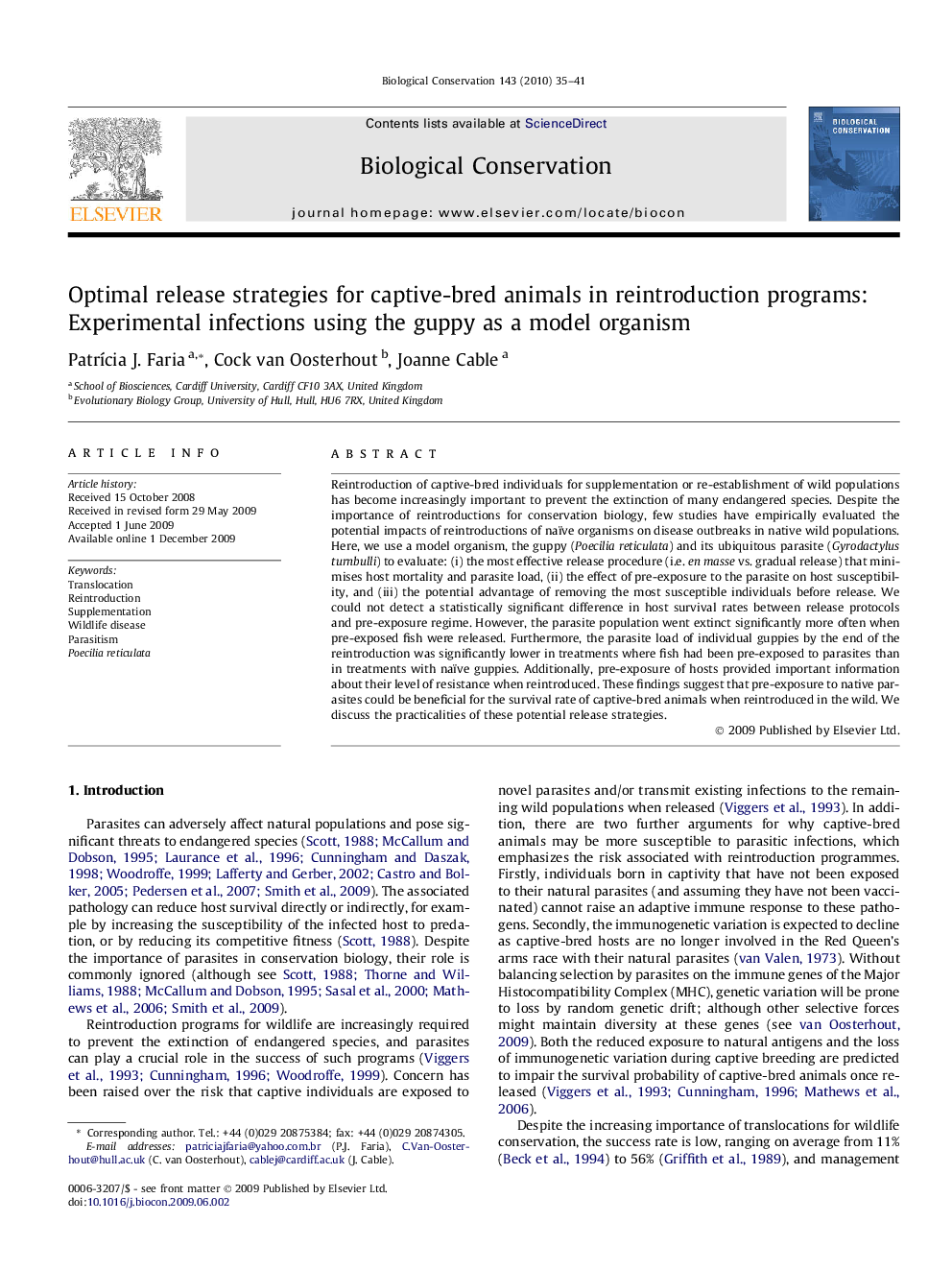| Article ID | Journal | Published Year | Pages | File Type |
|---|---|---|---|---|
| 4386051 | Biological Conservation | 2010 | 7 Pages |
Reintroduction of captive-bred individuals for supplementation or re-establishment of wild populations has become increasingly important to prevent the extinction of many endangered species. Despite the importance of reintroductions for conservation biology, few studies have empirically evaluated the potential impacts of reintroductions of naïve organisms on disease outbreaks in native wild populations. Here, we use a model organism, the guppy (Poecilia reticulata) and its ubiquitous parasite (Gyrodactylus turnbulli) to evaluate: (i) the most effective release procedure (i.e. en masse vs. gradual release) that minimises host mortality and parasite load, (ii) the effect of pre-exposure to the parasite on host susceptibility, and (iii) the potential advantage of removing the most susceptible individuals before release. We could not detect a statistically significant difference in host survival rates between release protocols and pre-exposure regime. However, the parasite population went extinct significantly more often when pre-exposed fish were released. Furthermore, the parasite load of individual guppies by the end of the reintroduction was significantly lower in treatments where fish had been pre-exposed to parasites than in treatments with naïve guppies. Additionally, pre-exposure of hosts provided important information about their level of resistance when reintroduced. These findings suggest that pre-exposure to native parasites could be beneficial for the survival rate of captive-bred animals when reintroduced in the wild. We discuss the practicalities of these potential release strategies.
